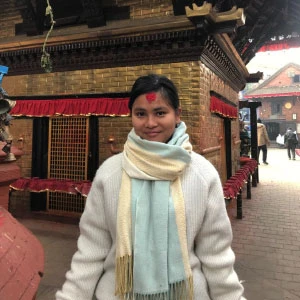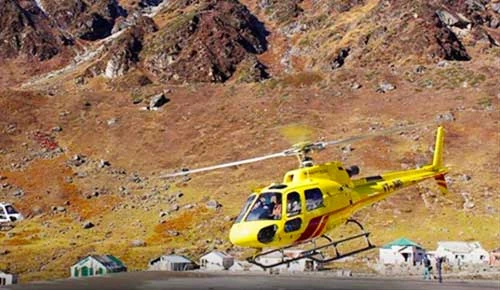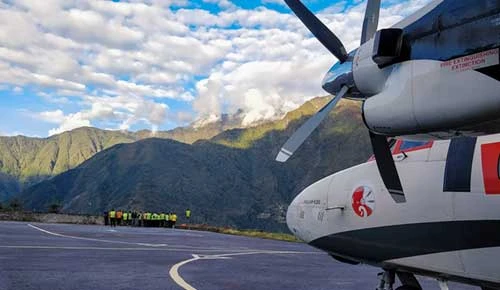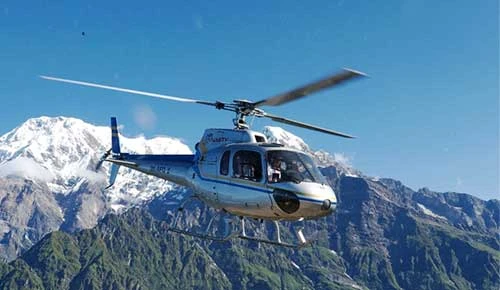Best Time to Visit Tilicho Lake
Tilicho Lake, located in Annapurna region of Nepal at 4,919 meters, is one of the highest lakes in the world. It is a turquoise jewel, surrounded by majestic peaks such as Tilicho Peak, Nilgiri, and Khangsar, creating breathtaking views. The Tilicho Lake Trek is a part of the remote Himalayas that is beautiful, spiritually relaxing and adventurous, which makes it attractive to thousands of travelers each year. The best time to visit Tilicho Lake depends on the weather, visibility, and trail conditions It is, as a rule, better in spring (March-May) or in fall (September-November). Trekkers can enjoy clear skies, pleasant weather, and a clear view of the mountains during these months.
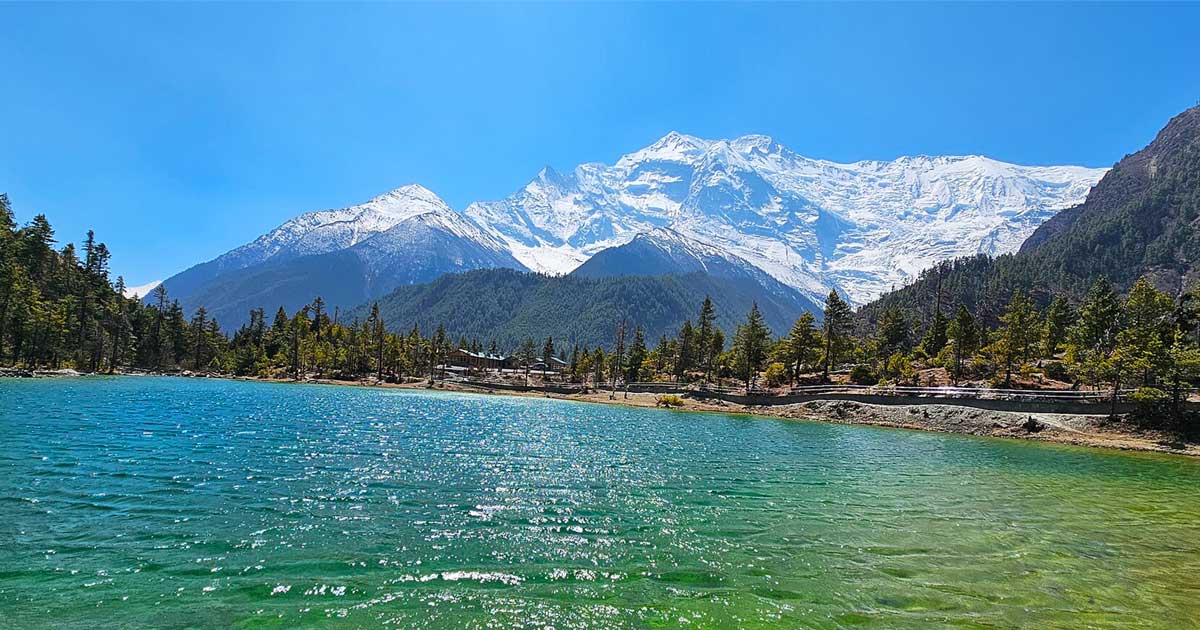
When planning the trek to Tilicho Lake, it is best to be informed about the weather, the condition of the trails, and the season you choose for a nice adventure. This guide includes comprehensive details about the location, geography, climate, plants, wildlife, photography, travel information, and weather to help you plan your perfect journey to this wondrous world in the Himalayas.
Table of Contents
Location, Geography & Climate of Tilicho Lake
Tilicho Lake is an area classified under the Annapurna Conservation Area and located in the Manang district, central Nepal and typified by the spectacular Tilicho Lake geography and highly diverse ecological nature. Tilicho Lake is situated at an altitude of nearly 5,000 meters and is considered one of the highest glacial lakes in the world, receiving meltwater from the glaciers of Tilicho Peak (7,134 m).
It is mountainous in the environment with sudden cliffs of rocky outcrops, precipitous valleys and snowy mountains. The Tilicho Lake climate is very dynamic in relation to the altitude and the time of the year:
- Spring/Autumn: Pleasant days (5°C to 15°C), cold nights (below freezing).
- Winter: Harsh cold, with temperatures dropping to -15°C.
- Monsoon: intense rain, low visibility and oily paths. During winter the lake completely freezes, whereas in the summer and autumn, it displays the nearby peaks in a rich sapphire color. Geographic peculiarities and high climate provide the most stunning and difficult trekking conditions.
Route, Difficulty & Duration of Tilicho Lake Trek
The Tilicho Lake Trek route is a very adventurous version of the Annapurna Circuit Trek; the starting point is Besisahar, followed by Chame, Pisang, and Manang Village. It is here that the trekkers separate to the base camp of Khangsar, which is Tilicho base camp, and lastly, great Tilicho Lake. The climb to the Tilicho Lake is moderate to harsh. The path is marked with steep climbs and footways through elevated levels and one-track rocky roads, particularly within the region along the lake.
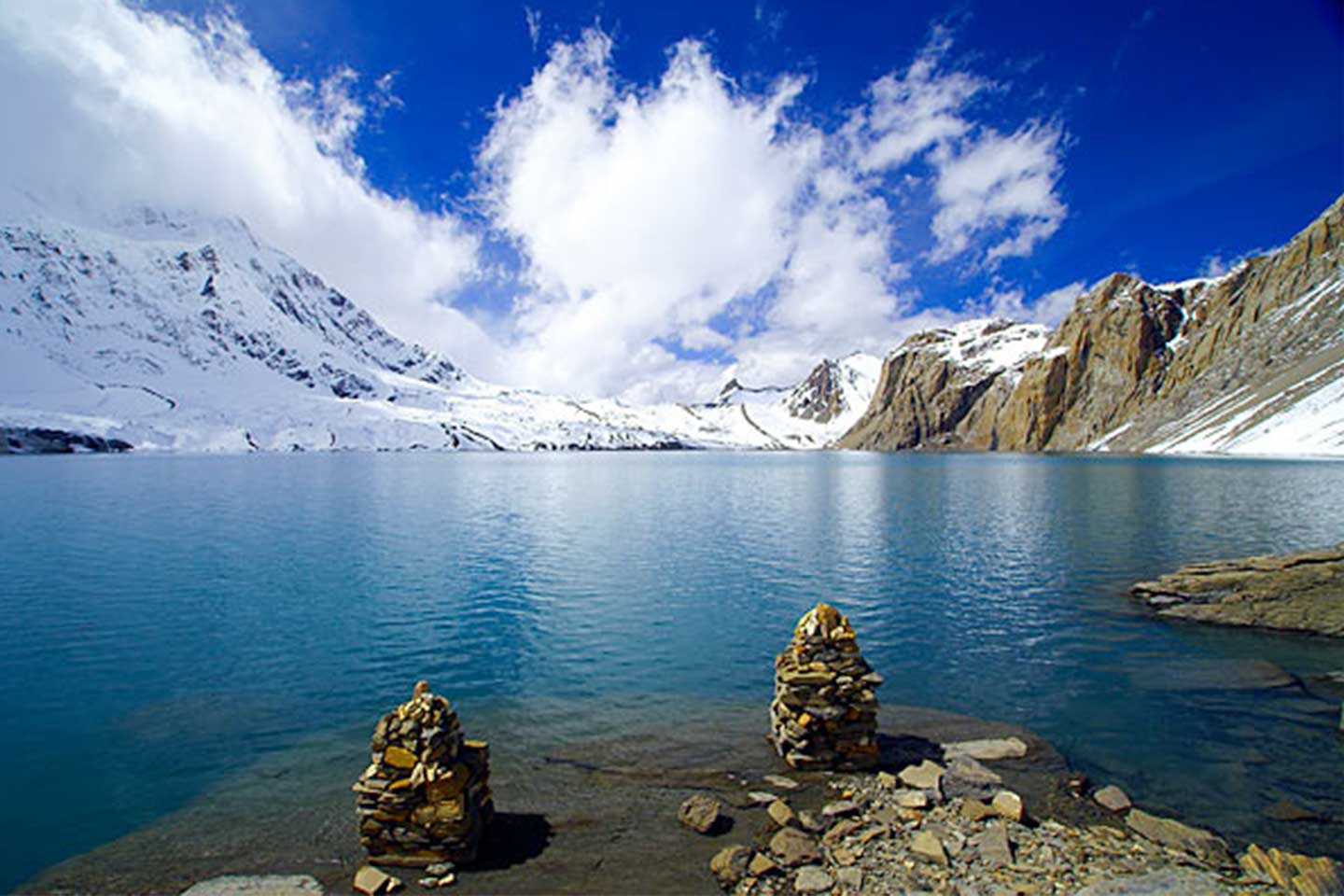
The duration of this period is normally between 10 and 14 days with acclimatization and side trips. As well, fit trekkers can use Tilicho Lake with Thorong La Pass Trekking routes. The trekking gives the cultural and adventure experiences and nature. The beginners and experienced trekkers will be able to enjoy this amazing journey with proper preparation and pacing.
Highlights of Tilicho Lake Trek
The Tilicho Lake Trek is truly awe-inspiring due to its natural, cultural, and spiritual phenomena, making it one of the most rewarding treks in Nepal.
- Tilicho Lake: The lake lies deep in blue and is surrounded by mountainous peaks.
- Annapurna and Nilgiri Ranges: Spectacular 360 Himalayan views.
- Manang Valley: A mix of ancient monasteries, Tibetan culture and villages constructed with stones.
- Tilicho Base Camp: This is a resting place for the ultimate climbing, which can provide uncivilized mountainous scenery.
- Braga Monastery: This is one of the oldest monasteries in the area that has traditional Buddhist art.
- Various sceneries: subtropical woods, desolate alpine deserts.
- Calmness and Tranquility: Not as congested as Everest and the Annapurna Base Camp.
These characteristics contribute to making the Tilicho Lake trekking experience not only a physical exercise challenge but also a source of spiritual and cultural enlightenment.
Best Time for the Tilicho Lake Trek (Weather & Temperature)
The weather, visibility, and comfort all influence the best time for the Tilicho Lake Trek. It is believed that the climate of the Himalayas changes radically throughout the year, and therefore there is a need to choose the right season for the Tilicho Lake trekking.
Spring (March–May)
Tilicho Lake has one of the most popular tourist seasons, the spring season. It is a stable weather condition, having the daytime temperature of 5°C to 15°C. The sky is intense blue, paths are dusty, and rhododendron leaves are beautiful and pleasant to trek through, thus making trekking in Nepal beautiful and scenic. Tilicho Peak and the Annapurna are also spectacular sightseeing places. The snow starts melting, the mountaintops are cleared, and traveling is easier. The spring season (March to May) offers the best weather conditions in the Tilicho Lake region for capturing photographs, observing wildlife, and enjoying comfortable trekking for those seeking adventure.
Summer/Monsoon (June–August)
The lower sections experience the Tilicho Lake monsoon season, characterized by warm temperatures ranging from 10°C to 20°C and heavy rainfall. The tracks are likely to be wet and greasy when the clouds are clouding the ground; landslides are also a usual phenomenon, and visibility is not good. Despite its beautiful and green surroundings, the season is not the time to go with the Tilicho Lake Trek, as the Tilicho trail is generally pretty dangerous and wet. Nevertheless, daring mountaineers that enjoy trekking solo can hike with the equipment. Manang and Upper Mustang do not have heavy precipitation, and this means that there are limited trekking trails.
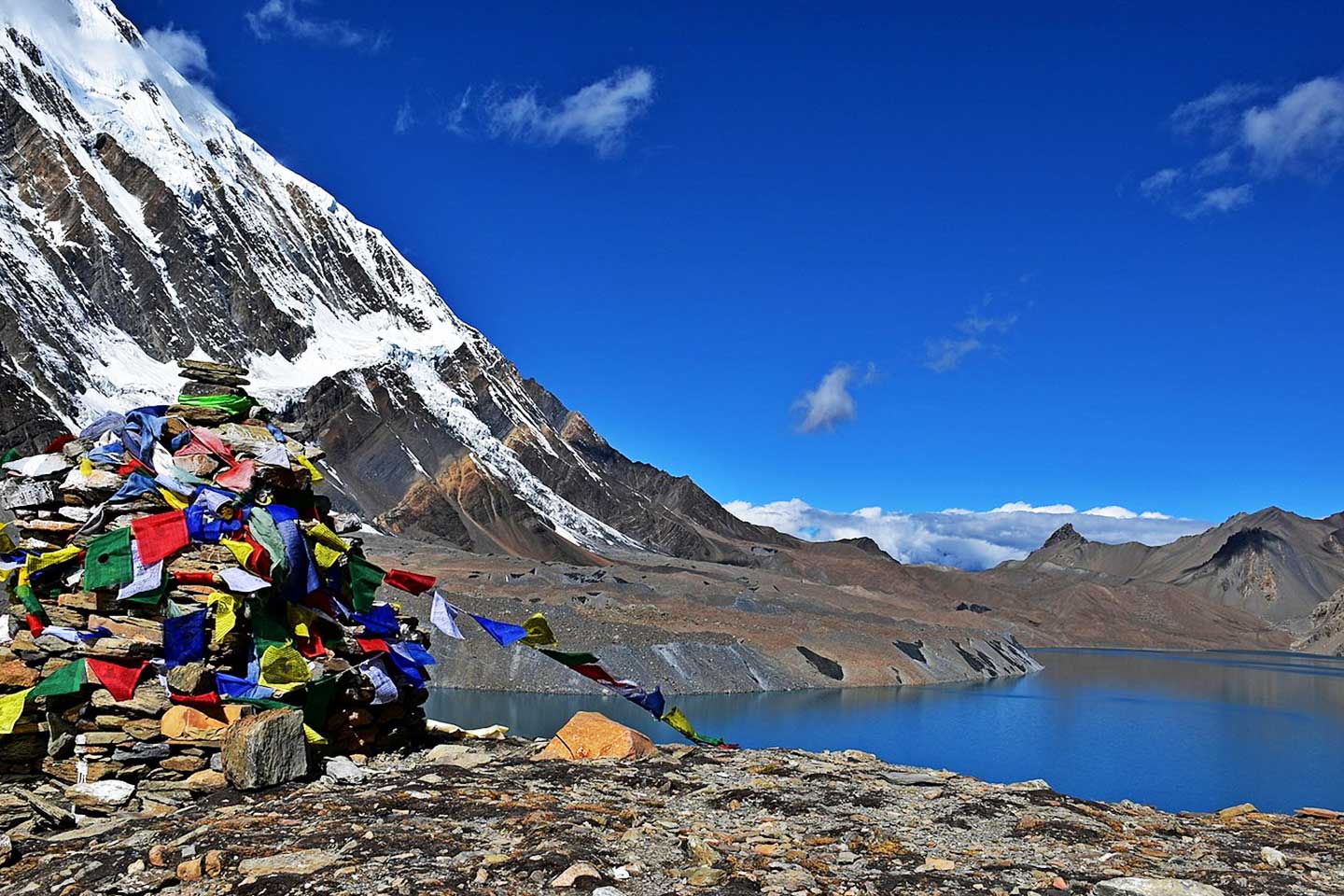
Autumn (September–November)
The most preferred and the best season to trek to the Tilicho Lake is autumn. The monsoon seasons are crystal clear, with the trails dry and the mountain views excellent during the post-monsoon seasons. The daytime temperatures range from 4°C to 12°C, making trekking highly convenient. The evenings are too cold, but the view of Tilicho Lake, Annapurna, and Nilgiri is worth it. Such festivals as Tihar and Dashain are also highly cultural and define the season. Autumn is the most appropriate season to have a trek to the Tilicho Lake because of the constant weather, lack of rain, and scenic beauty.
Winter (December–February)
Trekking to Tilicho Lake in winter is frigid and difficult. Temperatures can drop between -10°C and -20°C, causing the lake to freeze completely. Even experienced trekkers are unable to navigate the trails when they are blocked by snow, which can occur around the Tilicho Base Camp. Winter is still cold, despite spectacular views, stunning scenery, and fewer people. His trekker must also be well equipped, and he must be ready to face a harsh climate. Tilicho Lake in winter is a wondrous sight to the individual who is alone, but it also needs preparation and attention.
All in all, spring and autumn are the perfect weather, safety, and landscape combination.
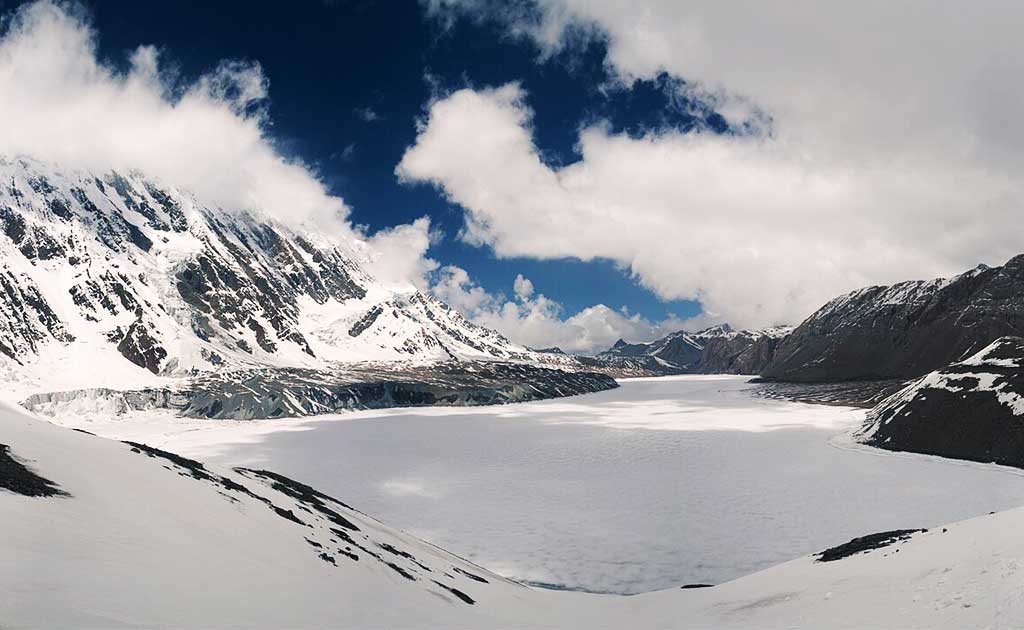
Flora and Fauna During Tilicho Lake Trek
It is amazing that the Tilicho Lake trek is situated within the biodiversity of the Annapurna Conservation Area. Nevertheless, even at the altitude, there is life in intriguing forms.
Trekkers encounter pine, juniper, birch, and rhododendron forests in the lower regions (down to 3,000 m). These are colorful woods, and they are vibrant in the spring season, thus making it a heaven for Tilicho Lake nature enthusiasts. As you ascend, the vegetation transforms into alpine shrubs and mosses, along with other plants that grow out of the rocks, which endure the severe winds.
Tilicho Lake Wildlife is home to blue sheep (Bharal), Himalayan tahr, marmots, and Himalayan snowcocks. Lucky travelers will even encounter a snow leopard or a Himalayan griffon flying by. The area's flora and fauna add to the trip's flavor and let trekkers see nature's power in one of the world's most inhospitable places.
Photography at Tilicho Lake
Tilicho Lake is a paradise for photographers. The new snow-topped mountains surrounding the glamorous turquoise water are an ideal composition. The most favorable periods of the year regarding photography are the spring and the fall seasons since the visibility is greatest and the sunlight most suitable. The morning light provides golden light to the Tilicho Peak view, and the evening shots reflect mirror images of the lake surface.

Carry a wide-angle lens to make enormous panoramas, as well as carry a polarizing filter to make colors more vivid. In the case of the drone photography, one can see the beautiful symmetry of the lake. Annapurna photography can also be applied in Manang and Braga with the traditional Tibetan-style villages, prayer flags, and monasteries in the background of the Himalayas. In the monsoon season, it is worth avoiding since the clouds and mist will block the vision. The winter photography is an ice-cold world, but it needs proper equipment and care.
Travel Tips for Tilicho Lake Trek
Here are a few travel tips for the trekkers who are planning to do Tilicho trek. These Tilicho Lake travel tips will ensure that you have a better ride on the lake.
- Choose the Right Season: Tilicho Lake trekking guides are meant to work in the months of March through May and September through November.
- Permits: It is necessary to get an ACAP permit and TIMS card in Kathmandu or Pokhara.
- Acclimatization: There is a minimum of a two-night stay in Manang to adapt to the altitude.
- Physical Preparation: It is suggested to train regularly on cardio and endurance.
- Packing List: Warm clothes, trekking poles, a power bank, and a first aid kit.
- Guides and Porters: Hiring local guides and porters supports the community and ensures safety.
- Water & Food: Clean water to drink; teahouses are located to take simple Nepalese and Tibetan food.
- Health & Safety: Hydrate, do not drink alcohol at high altitude, and descend in case of signs of AMS (Altitude Mountain Sickness) or the Tilicho Lake safety trek.
- Respect the environment: Avoid littering and follow eco-friendly trekking practices.
Conclusion
The trek to Tilicho Lake is more of an adventure than a traditional hike, offering a journey through a world of harmony, power, and untouched beauty. This lake, encircled by the high Annapurna Himalayas, not only reflects the mountains but also captures the essence of each traveler who visits it. Knowing the best time to come to Tilicho Lake, its weather, paths to follow, and the surrounding attractions, you will be able to plan a trip that will be secure, stunning, and exceptionally rewarding. Each season presents a different image on the smooth surface of Tilicho, showcasing spring's rhododendron forests and autumn's golden hues.




